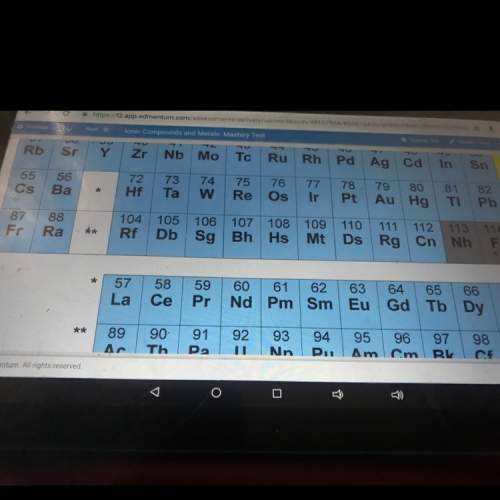
Chemistry, 10.03.2020 03:39, puchie1225
The following reaction has the thermodynamic values at 298 K: ΔH° = -136.9 kJ/mol and ΔS° = -120.6 J/mol K. Calculate ΔG° at 298 K for this reaction in kJ/mol (Enter your answer to four significant figures.):

Answers: 1
Other questions on the subject: Chemistry


Chemistry, 22.06.2019 12:10, kaitlynbernatz2778
If a molecule with a molecular formula of c13h18 is treated with an excess of h2 in the presence of finally divided pt metal under conditions required for maximum hydrogenation of the molecule to give a molecule with a formula c13h24, how many rings are in the molecule?
Answers: 3

Chemistry, 22.06.2019 14:20, greenbyron88
Which statement explains why the bonds between non metals tend to be covalent? the bonds are found to be nondirectional they have large differences in electronegativity they have small differences in electronegativity they have ions that produce an electrostatic pull
Answers: 1

Chemistry, 22.06.2019 14:30, clemsongirl5392
Select all that apply. using a value of ksp = 1.8 x 10-2 for the reaction pbcl2 (s) pb+2(aq) + 2cl -(aq). the concentration of the products yield a ksp of 2.1 x 10-2:
Answers: 2
Do you know the correct answer?
The following reaction has the thermodynamic values at 298 K: ΔH° = -136.9 kJ/mol and ΔS° = -120.6 J...
Questions in other subjects:








Mathematics, 17.06.2021 15:50

Biology, 17.06.2021 15:50


 at 298 K is -101.0 kJ/mol
at 298 K is -101.0 kJ/mol
 , T and
, T and  represent change in free energy in standard state, change in enthalpy in standard state, temperature in kelvin scale and change in entropy in standard state.
represent change in free energy in standard state, change in enthalpy in standard state, temperature in kelvin scale and change in entropy in standard state. , T = 298 K and
, T = 298 K and 






